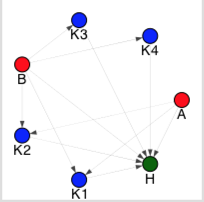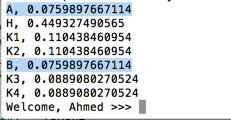Please consider the following arbitrary network and the PageRank scores below:




As you see, both A and B user nodes contribute differently to the network. They interact with K_i products and express certain sentiments (just one sentiment in this example for simplicity: H). Yet they have the exact PageRank because they both don't receive any voting from other nodes (users receiving votes by products and sentiments doesn't make sense in this case). I am thinking that there should be anther way to quantify the interaction given the different activities. Perhaps using the multilayer network approach will reveal more info.
If you think of something else that can hight such activities please feel free to share.
Thanks very much,
-Ahmed